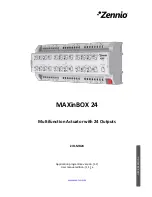
HP Array Configuration Utility 63
Parameter
Acceptable values
Comments
drives
[#:]#:#,[#:]#:#,...|[#:]#:#–
[#:]#:#|all|allunassigned
The default setting is
all.
raid
60|50|6|adg|5|1+0|1|0|?
The default setting is the highest
RAID level that the controller
model and number of drives can
support, except 50 or 60 (which
must be specified deliberately).
paritygroups
2|#
The default value is 2.
ss
8|16|32|64|128|256|default|?
Units are KB.*
The default setting depends on
the RAID level.
size
#|max|?
This parameter determines the
desired size of the logical drive.
Units are MB.*
The default setting is
max.
sectors
32|63|default|?
The default setting depends on
the operating system.
aa
enable|disable|?
The default setting is
enable.
drivetype
sas|satalogical|sata|saslogical|para
llelscsi|?
—
*Use only these units. Do not enter any extra text in the command to specify the units.
If you specify an array as the target, you can omit the
drives
parameter, because the drives are already
implicitly defined by the array ID. This feature is useful if you are entering the command directly into the
CLI console because you do not need to remember which drives belong to the array. When you write a
batch file, however, it is often easier to specify every drive in the array than to parse out the array ID.
When you use the
drives
parameter you can list each drive individually, you can specify a drive range,
or you can specify both a range and some individual drives. A drive range can span ports, boxes, and
bays. If you specify individual drives, they do not have to form a continuous sequence. If you specify a
range, the CLI automatically excludes from the target any drive in the range that is unavailable (for
example, a drive is excluded if it already belongs to an array, is a spare, has too small a capacity, or
has failed).
If you want to specify an existing array by its drives rather than by array ID, then all of the drives that you
specify must belong to the same array, and none of the drives in the array can be omitted.
Example commands:
ctrl slot=5 create type=ld drives=1:0,1:1,1:3 raid=adg
ctrl slot=5 create type=ld drives=1:1-1:3 raid=adg
ctrl slot=5 create type=ld drives=1:7,1:10-2:5,2:8-2:12 raid=adg
ctrl slot=5 array A create type=ld size=330 raid=adg
The following pair of commands demonstrates how the
drives
parameter can be used in a batch file to
create two logical drives on the same array, one of 330 MB and the other of 450 MB:
ctrl slot=2 create type=ld drives=1:1-1:6 size=330 raid=adg
ctrl slot=2 create type=ld drives=1:1-1:6 size=450 raid=5
Sample scenario
Consider a situation in which you want to create two arrays. One of these arrays needs two logical
drives, while the other needs only one.
















































